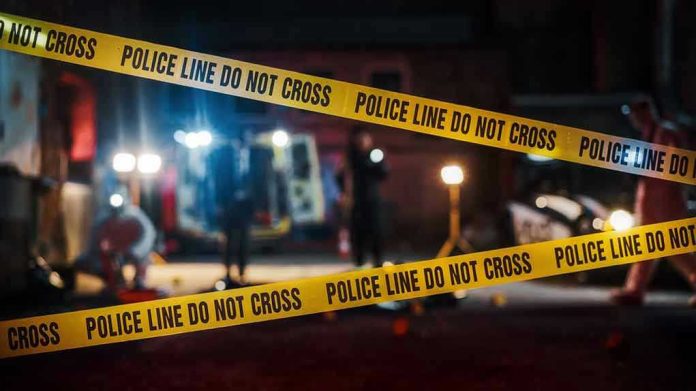
One decision, made in the heat of a knife-waving barroom scuffle, shattered a Tennessee town’s sense of safety and left a local business owner dead—raising chilling questions about how quickly violence can escalate when warning signs go unheeded.
Story Snapshot
- Athens, Tennessee bar owner Randy Croft killed by a previously banned patron
- Knife threat, ejection, and a “banned for life” order failed to prevent fatal return
- Shooter fled in victim’s truck, captured after multi-county police chase
- Incident spotlights gaps in bar security and the urgent need for rapid threat response
From Barroom Scuffle to Irreversible Tragedy
Inside the Double CC Bar & Grill, regulars might have expected another night of small-town camaraderie. Instead, a young man named William Charles Thomas Sullivan, just 24, exploded into chaos, brandishing a knife at fellow patrons. Staff quickly ejected him and declared a lifetime ban—a move intended to restore order. Yet, within half an hour, the plan backfired with lethal consequences. Sullivan returned, not with a knife, but a gun. He fired at bystanders in the parking lot, then confronted owner Randy Croft. In seconds, Croft was fatally shot. The killer stole Croft’s truck and sped into the rural darkness, igniting a police chase that would ripple across county lines.
The community, blindsided, watched the bar transform overnight from a place of laughter to a scene of memorials and police tape. Croft’s death wasn’t just a personal tragedy but a public shockwave, fueling debates about security, mental health, and the adequacy of “banned for life” policies in real-world crisis management.
The Anatomy of Escalation: Missed Warnings and Systemic Gaps
Sullivan’s ejection, prompted by a knife threat, might have seemed decisive. But no one called police after the initial confrontation. His girlfriend drove him home, while the bar’s night resumed—until Sullivan returned with deadly intent. The rapid escalation from knife to gun, and the killer’s ability to reenter the premises so soon after being banned, exposed vulnerabilities in how establishments handle dangerous patrons. Law enforcement later questioned why no one reported the knife threat immediately, a step that might have prevented the owner’s death. The rural setting compounded the risks, as response times lagged and staff were left to manage a volatile situation without backup.
The tragedy is not unique in the annals of barroom violence, yet the pattern—a banned individual returning swiftly, bypassing informal security measures—remains rare but deeply alarming. Previous Tennessee incidents involving bar shootings rarely followed such a clear, ignored warning. Security experts and criminologists alike point to a chain of missed steps and the need for urgent protocol reforms.
Stakeholders, Repercussions, and the Ripple Effect on Community Safety
Sullivan, in custody, claims a panic attack led to accidental gunfire—a claim at odds with the chilling sequence of deliberate actions witnessed by patrons and detailed in police affidavits.
Croft’s family, employees, and the wider Athens community now face immeasurable loss and disrupted livelihoods. The bar remains shuttered, its entrance draped in flowers and hand-written notes. Law enforcement officials, meanwhile, have used the case to emphasize the critical importance of reporting all violent threats—no matter how swiftly the immediate danger seems resolved. The incident has also placed a spotlight on the power dynamics between business owners and unruly patrons, underscoring the risks owners take when stepping in directly to confront escalating violence.
Impact, Industry Reckoning, and the Road Ahead
In the days since Croft’s death, Athens has grappled with more than grief. The closure of a local institution is a blow to the community’s social and economic fabric. Bar owners and managers across Tennessee are reassessing their own policies, with renewed attention on staff training, security infrastructure, and the limitations of informal bans. There is mounting pressure for clear legislative guidance on when and how to involve law enforcement in threats of violence—especially in rural areas where backup may be far away.
Beyond the business implications, the tragedy has stoked debates about mental health, gun access, and the broader public’s expectation of safety in social spaces. Criminologists point to the case as a textbook example of escalation: initial threats left unaddressed, emotional volatility, and rapid rearming. Community members are left asking whether the owner’s intervention was heroic, or a last-resort response in a system ill-equipped to prevent tragedy once violence is set in motion. For now, the story stands as a cautionary tale—one that may soon influence bar safety protocols and state-wide policy reform, long after the flowers fade from the Double CC’s front door.



